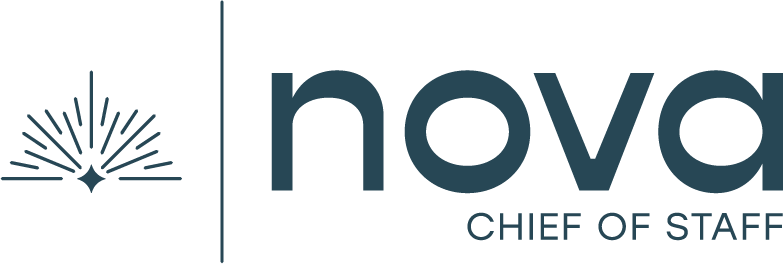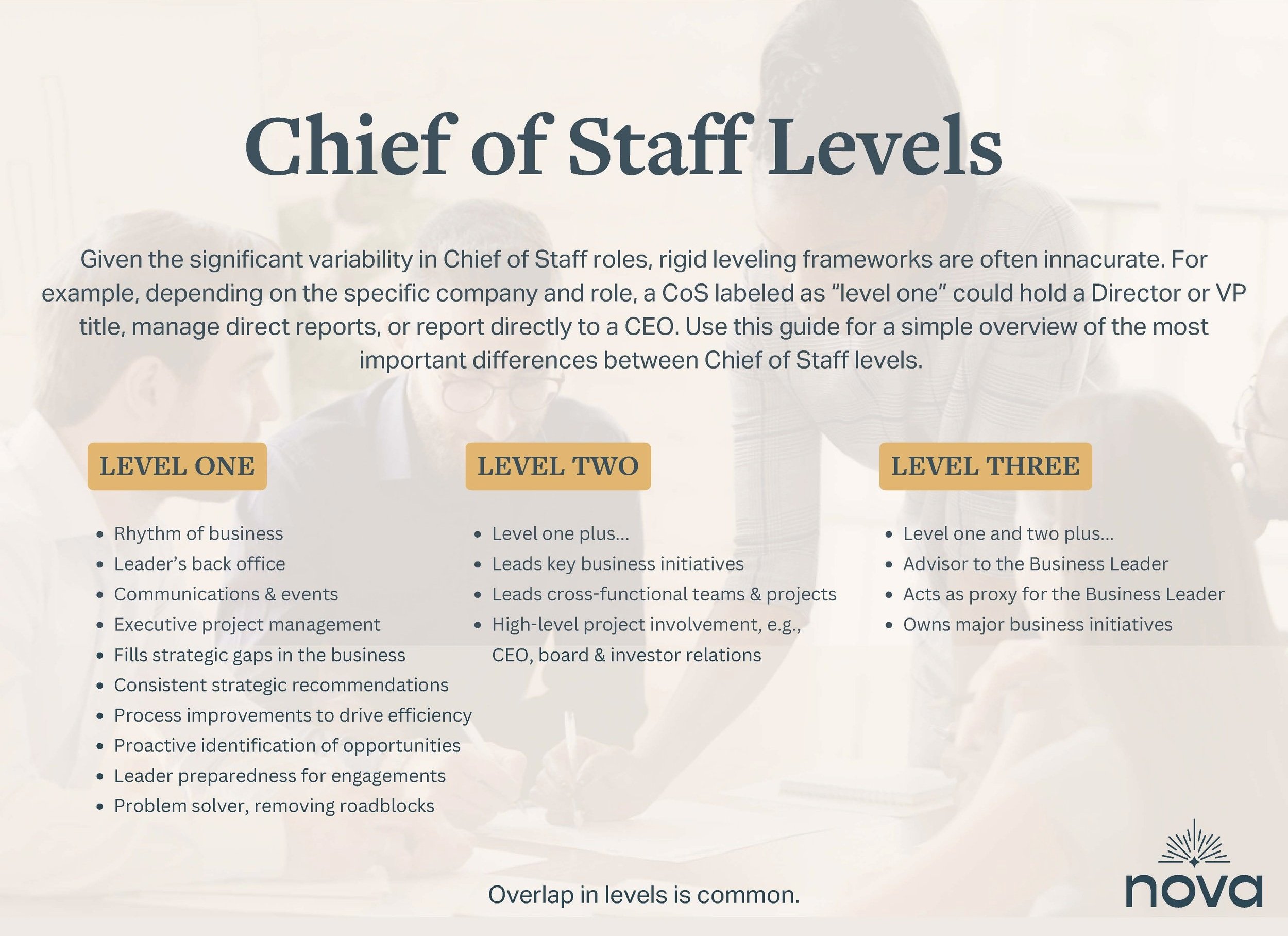Nova’s Chief of Staff Leveling Framework
Chiefs of Staff operate under a variety of titles, seniority levels, compensation ranges, and day-to-day responsibilities. From strategic alignment to executive partnership, Chiefs of Staff tackle diverse responsibilities that adapt to company needs, leadership styles, and individual skills. While no two Chiefs of Staff are the same, there are key levels of seniority that define the role’s impact. However, the core purpose of the role is the same everywhere:
→ A leader's strategic thought partner and right hand focused on maximizing the leaders’ time, driving transparency and alignment across the leadership team, moving the business forward more efficiently, ensuring leader and team preparedness, and managing the leader's most important priorities.
A leveling system provides a structured way for companies to categorize Chiefs of Staff by skills, impact, and responsibility, making it easier for people in the role and their organizations to understand career development paths, compensation expectations, and role clarity.
However, it’s *impossible* to fit the Chief of Staff role into clear boxes that tell us the exact duties and comp a Chief of Staff should hold based on being Director, VP, or Manager level. Fitting Chiefs of Staff into rigid titles or pay bands doesn’t capture the diversity of their responsibilities or value. Why? Because so much depends on a huge variety of variables like:
Company structures (startup vs. F500)
Company gaps to fill (HR team vs. no HR team)
The needs of the leader you're supporting (they love writing vs. hates writing internal comms)
The Chief of Staff themselves (excellent PM vs. excellent strategic planner)
This diversity in duties is the beauty of the role.
When it comes to "Chief of Staff Levels," the easiest way to understand them is to break down the Chief of Staff role into core responsibilities of all Chiefs of Staff. Referencing the chart below, all Chiefs of Staff do the duties of a Level One, including documenting the Rhythm of Business, organizing the Leader's back office, and Executive Project Management. However, more experienced CoSs also take on Level Two work, leading key business initiatives and cross-functional teams.
Level Three Chiefs of Staff do all the above, plus:
→ Lead high-level, strategic projects
→ Lead major cross-functional initiatives
→ Act as proxy & advisor to the business leader
The power of the Chief of Staff role lies in its flexibility and strategic importance. Understanding the differences in seniority can help you navigate the path forward and can help prospective employers better understand how to tailor the role to fit their needs.
Makes sense, right? At Nova Chief of Staff, we created a simple leveling framework to account for the key differences in Chief of Staff seniority. Visit Nova’s Free Resource Library to learn more about our Nova leveling system and see if our Chief of Staff Certification course could be the next step in your journey.


